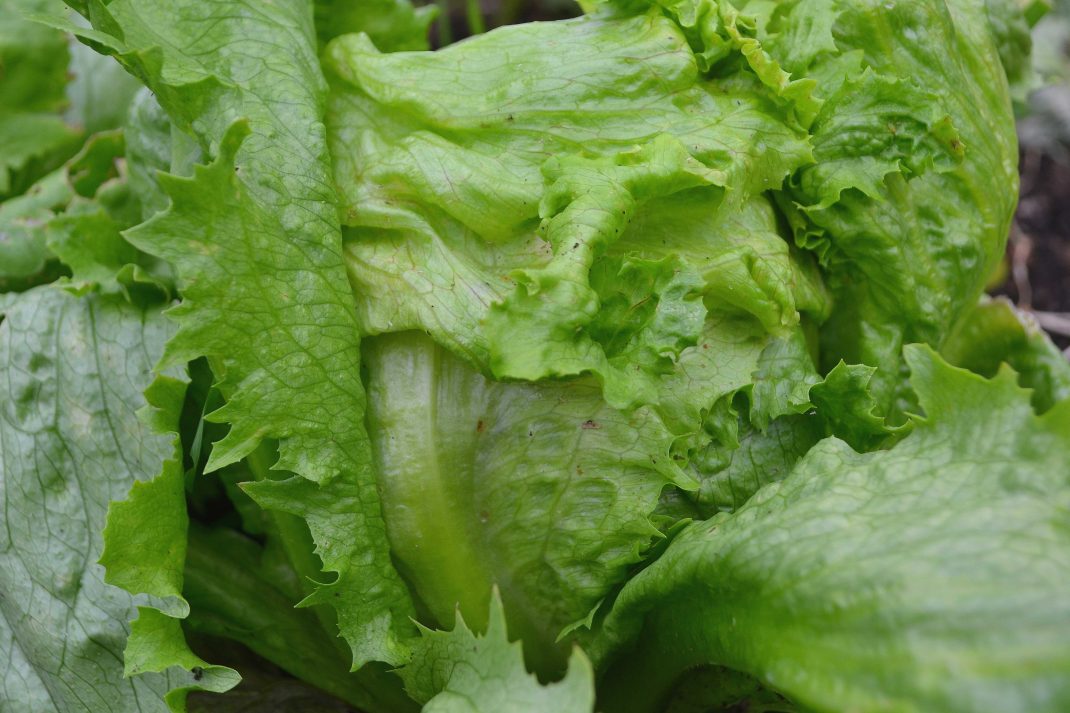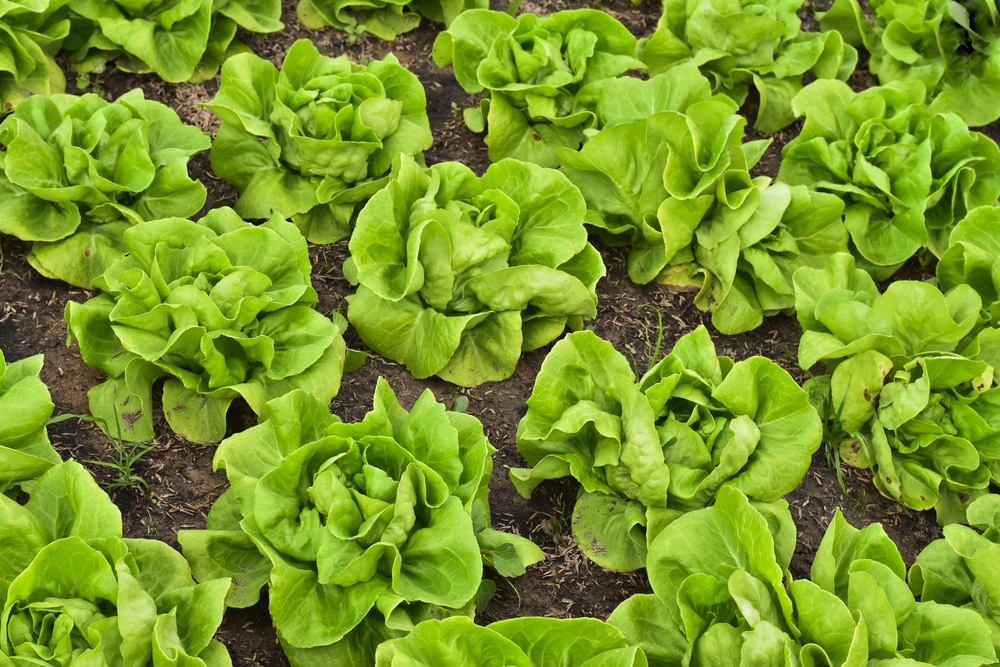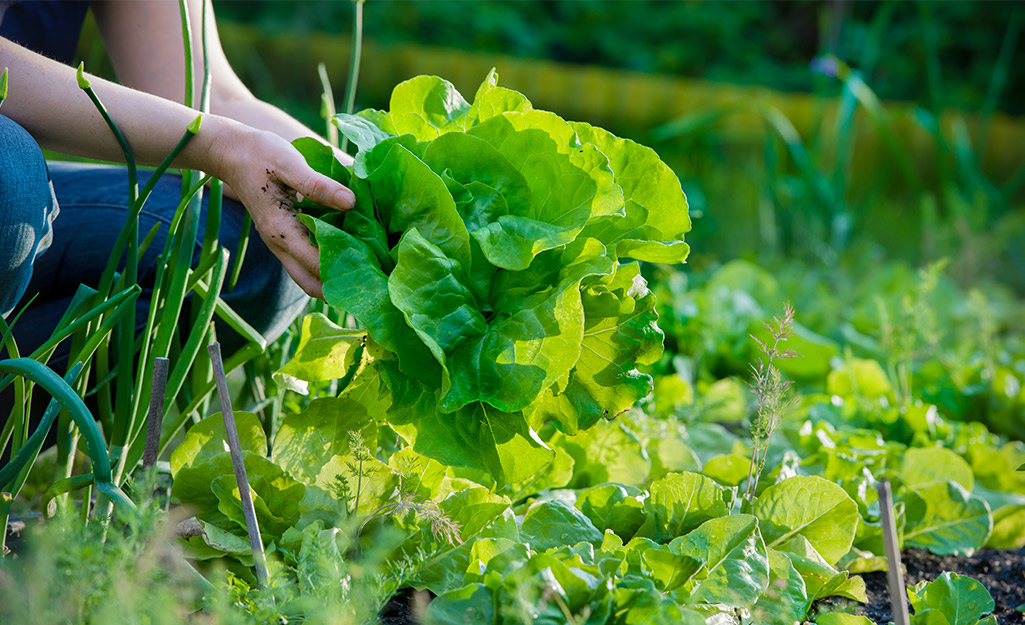When To Harvest Lettuce
Lettuce is a popular cool-season crop that is relatively easy to grow and harvest. Knowing when to harvest lettuce is crucial to ensure the best taste, quality, and yield. In this guide, we will provide helpful tips for harvesting different types of lettuce at the right time.
Timing is essential when it comes to harvesting lettuce. Harvesting lettuce too early or too late can result in suboptimal taste and texture. The ideal time to harvest lettuce depends on the type of lettuce, its growth stage, and the weather conditions.
Types of Lettuce
Butterhead or Boston lettuce is a popular variety known for its tender, buttery leaves that form loose heads. This type of lettuce is delicate and has a relatively short shelf life, making it best to eat fresh. Boston lettuce is the perfect choice for sandwiches, as lettuce wraps, or as a bed for salads.
Crisphead or Iceberg lettuce is another popular variety that forms dense, crunchy heads. It has a firm texture and a mild, sweet flavor, making it ideal for sandwiches, hamburgers, or as a base for salads. However, this lettuce is not as nutrient-dense as other varieties.
Loose Leaf lettuce is a popular type that does not form a head. This variety comes in many colors, shapes, and flavors and is the most nutrient-dense of all types. Its leaves are tender and delicate, with a sweet, slightly nutty flavor. Loose Leaf lettuce is perfect for salad mixtures and sandwiches.
Romaine lettuce is another popular variety with tall, narrow heads with elongated leaves. It has a crunchy texture and a slightly bitter, nutty flavor. Romaine lettuce is ideal for Caesar salads or as a bed for other salads.
Factors Affecting When to Harvest
Lettuce is a popular leafy vegetable that is easy to grow and can be harvested in a variety of ways. Whether you are growing lettuce in a garden bed or container, it is important to know when and how to harvest it. The best time to pick lettuce depends on the type of lettuce you are growing, the maturity stage, and the weather conditions.
Temperature - Hot vs. Cool Weather
When it comes to lettuce growth and harvesting, temperature plays a critical role. Different temperature ranges can affect the growth cycle of the lettuce plant significantly. As such, it's important to understand the impact of temperature on your lettuce crop to determine the best time to harvest and maximize your yield.
For example, lettuce grows best in cool weather. If temperatures become too hot, the lettuce plant may bolt, meaning it will start producing seed heads instead of leaves, making it unsuitable for consumption. In contrast, if temperatures become too low, the lettuce may not grow at all, and it may suffer from frost damage.
To navigate these different scenarios, it's essential to choose lettuce varieties based on their temperature tolerance and the length of the growing season they require. For example, loose-leaf lettuce and romaine lettuce are known to handle heat well, while butterhead and crisphead lettuce varieties are better suited to cooler weather.
To protect lettuce plants from adverse weather conditions, gardeners can create shade or use a cold frame during hot summers or cover crops with frost blankets to protect them during colder weather. In this way, you can ensure that your lettuce crop thrives throughout the growing season, leading to a bountiful harvest.
Varieties of Lettuce
Lettuce is a cool-season crop that can be grown in garden beds or containers and is an excellent source of salad greens. There are several types of lettuce to choose from, each with its own unique flavor, texture, and color. The type of lettuce is a factor affecting when to harvest because each variety has a different time frame for maturity.
Harvest Time
Harvesting lettuce at the right time is crucial to get the best-tasting and nutritious leaves. When it comes to lettuce, timing is everything. Whether you're growing in a garden, containers or indoors, knowing when to harvest lettuce is essential for a bountiful yield.
Outer Leaves
When to harvest lettuce? A popular method of harvesting head lettuce for a continuous yield is by removing its outer leaves. This technique allows the lettuce plant to continue growing, producing fresh salad greens for weeks to come.
To start, it's essential to identify which leaves are mature enough for harvest. Mature leaves are typically larger, firmer, and greener in appearance than young ones. These outer leaves tend to be the most developed, making them the easiest to remove from the plant.
When harvesting outer leaves, it's critical to avoid disturbing the integrity of the head of lettuce. Start by gripping the base of the leaf closest to the stalk and gently twist it to loosen the leaf from the plant. Once the leaf has detached from the stalk, pull it away from the plant, taking care not to remove too many leaves that could stunt the growth of the lettuce plant.
Moreover, it's best to harvest the outer leaves before the lettuce begins to bolt or seed. Lettuce typically bolts and produces seeds when exposed to hot weather, making it bitter and unpalatable. Therefore, it's advisable to harvest lettuce during the cool season to prevent it from bolting.
Entire Plant or Head of Lettuce
Harvesting the entire lettuce plant or head of lettuce is quite different from harvesting individual leaves. When harvesting the entire plant or head, you have to wait until the lettuce has matured and formed a compact head. This usually takes around 1-2 weeks after the lettuce has reached its full size. It is important to note that harvesting the lettuce prematurely can result in smaller heads and a reduced yield.
Individual Leaves
To begin harvesting individual leaves, wait until your lettuce plant has reached a height of about 4 to 6 inches. At this stage, young leaves will start to appear on the outermost layer of the plant. Using a sharp kitchen knife or garden shears, carefully snip off any leaves that have grown to a length of at least 2 inches. Be sure to leave about an inch of stem attached to the plant to encourage continued growth.
As you collect the outer leaves, the inner leaves will continue to grow. This allows you to enjoy a constantly renewing supply of fresh, tender greens for your salads.
Another approach to harvesting individual leaves is to wait until the entire plant has reached its full height. At this stage, you can strip off all the leaves at once, giving the plant time to regrow a new set of leaves for subsequent harvest.
In order to maximize your yield when harvesting individual leaves, be sure to select the right lettuce cultivar for your needs. Different varieties have different maturity rates and size. For example, some cultivars of red leaf lettuce are ready to harvest in as little as 40 days, while others may take up to 70 days.
Loose Leaf Lettuce
When it comes to harvesting loose leaf lettuce, you have several options. You can either harvest the outer leaves, remove the entire plant, or use the cut-and-come-again method. To harvest the outer leaves, wait until the plant has at least six leaves, then remove the outermost leaves, leaving the smaller inner leaves to continue growing. For a more substantial harvest, you can remove the entire plant by cutting it at the base, but this will only yield one crop per plant.
The cut-and-come-again method involves cutting off the outer leaves while leaving the inner leaves to continue growing. This method encourages even more growth and ensures a steady supply of fresh lettuce leaves throughout the season. To use this method, wait until the plant has at least six leaves, then use scissors or a sharp knife to cut off the leaves about an inch above the soil level.
Preparation for Harvesting
Preparing to harvest lettuce is crucial to get the best yields and the most flavorful salad greens. Knowing when lettuce is at its peak maturity and how to pick it without damaging the plant is key to success.
Garden Beds and Soil Level Preparation
If you're planning to harvest lettuce, then preparing the garden bed and soil level is crucial to ensure maximum yield. Lettuce is a cool-season crop that thrives in well-draining, loamy soil with a high content of organic matter. Therefore, it is essential to prepare the soil before planting lettuce.
Begin by conducting a soil test to determine the soil's nutrient content. It will help you understand what nutrients and how much fertilizer it requires. Once you know the soil's nutrient content, work the fertilizer into the top six inches of the soil or apply one inch of well-composted organic matter per 100 square feet of garden area.
It is important to ensure that the soil remains adequately moist, but not waterlogged, to maintain steady growth. Lettuce prefers fertile soil that drains well and holds moisture appropriately. If your soil is too wet, you will end up with rotting roots and a reduced yield.
Plant lettuce seedlings in rows with ample space to grow to their optimum size while receiving full sunlight. Following the recommended spacing of 8-12 inches between plants and 12-18 inches between rows will help ensure that your lettuce plants have long, crisp leaves and healthy roots.
Protect young plants from strong winds and thin leaf lettuce when they are 1-2 inches tall. Wind and excess moisture are the most common causes of lettuce failure. Thinning is an essential step for maintaining the appropriate amount of space between your lettuce seedlings. Removing extra plants is necessary to allow the remaining plants to mature properly.
Storage and Preservation After Harvesting
When it comes to harvesting lettuce, timing is everything. But once you've successfully picked your lettuce, it's essential to store and preserve it properly to maintain its quality and nutritional value. Here are the best practices for storing and preserving your harvested lettuce for maximum freshness and crispness.
To store your lettuce, start by removing any damaged or wilted leaves. You can wash the leaves as well, but be sure to dry them completely before storing. Wet lettuce can develop excess moisture, leading to rotting.
For crisphead lettuce, it's best to leave the outer leaves intact and store the entire head of lettuce in a perforated plastic bag. This method will allow air circulation and prevent moisture build-up that can lead to decay. You can also wrap the lettuce in a paper towel and store it in the crisper drawer.
For loose-leaf lettuce and other salad greens, it's best to remove the excess moisture using a salad spinner. Once they are dry, store them in resealable plastic bags or airtight containers lined with paper towels to absorb moisture. This method can help retain the crisp texture of the lettuce.
For romaine lettuce, you can store them whole or chopped in a resealable bag lined with paper towels. Similarly, butterhead lettuce needs to be stored in a perforated plastic bag with the stem wrapped in a damp paper towel. This method can help keep the lettuce crisp and moist.
Generally, lettuce can be stored in the refrigerator for up to a week or two, depending on the type of lettuce and how it's stored. It's best to check the lettuce frequently and discard any wilted or slimy leaves.
Keep in mind the optimal storage time for each type of lettuce and regularly check for any spoilage to ensure their freshness.












